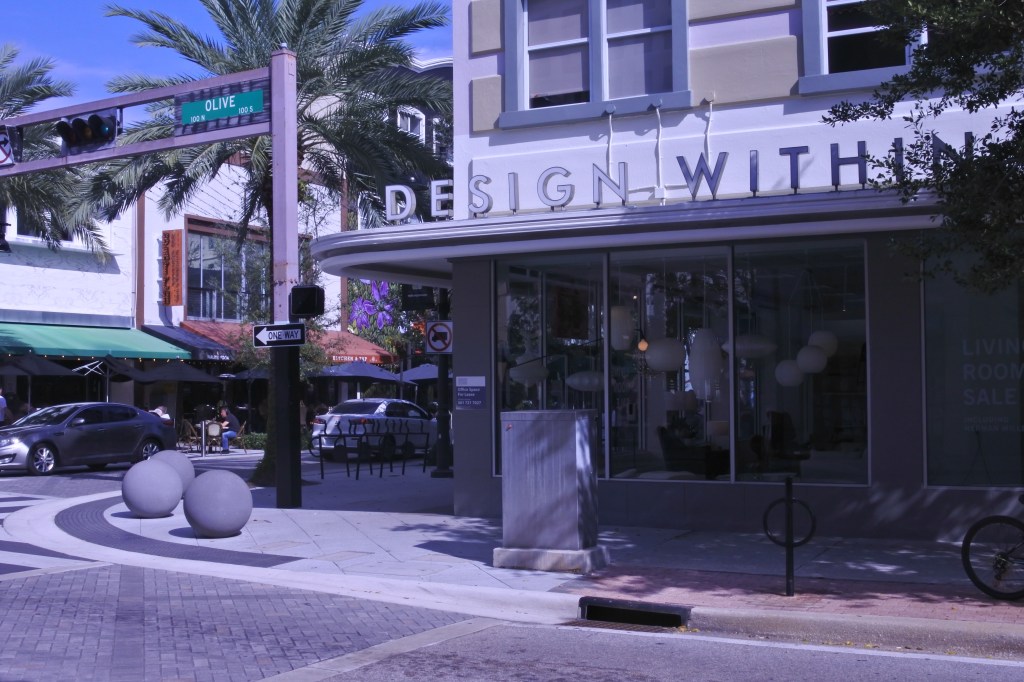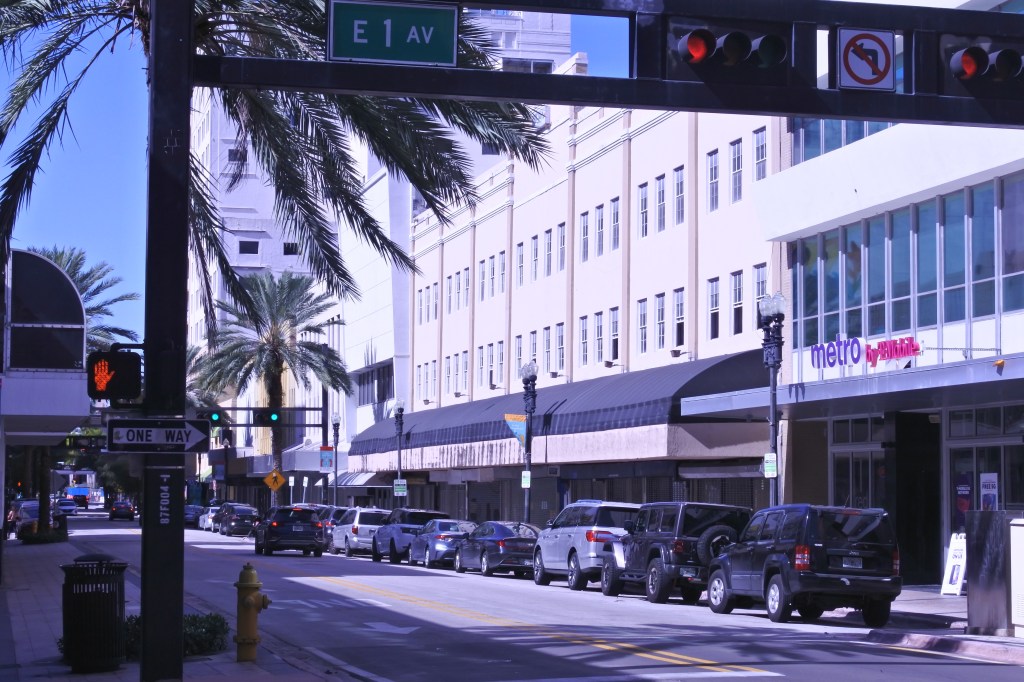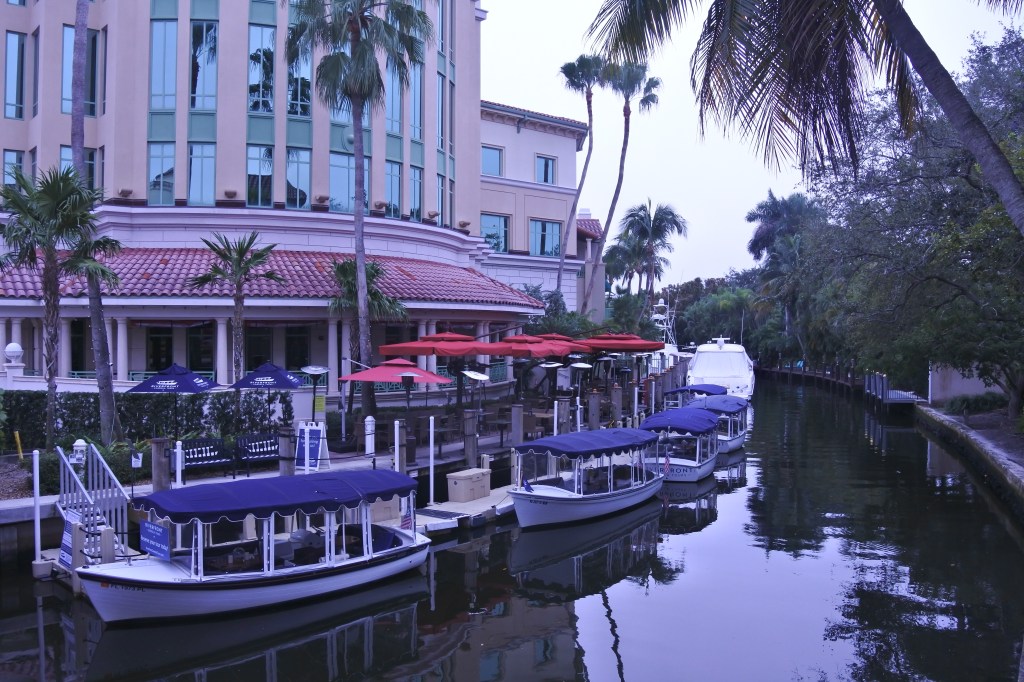For the borders of Dwtn West Palm Beach I use Royal Palm Way as the southern boundary, Sapodilla Ave to the west, Banyan Blvd and Quadrille Blvd to the north and the bay to the east.
I divide Downtown West Palm Beach into three districts: City Place- the new urbanist/town center development west of Quadrille Blvd; Clematis St- the historic main street which dead ends into a great urban park; and everything north and south of Clematis St which is pretty dead and half developed.
Downtown West Palm Beach fell on pretty hard times in the 70s/80s due to crime and suburban sprawl issues. But like most American downtowns it saw re-birth in the 90s thanks to the preservation and renovation of the Clematis main street and the construction of City Place. Since those major improvements there has been a consistant trickle of new apartment buildings Downtown, slowly improving the viability of Dwtn as an urban neighborhood.
But to become a great urban district West Palm Beach needs significantly more mixed-use urban in-fill in the portions of Dwtn north and south of Clematis St, better bike infrastructure, more affordable rental options, and more retail options outside of Clematis and City Place.

URBAN STRENGTHS:
* Great density for a Downtown.
* Excellent ADA infrastructure and streetscaping along Clementis (historic main street) and the City Place Development. More hit or miss in other parts of dwtn with current ADA curbs often missing.
* Connectivity is generally good Dwtn but there are several wide, fast moving boulevards here.
* Generally a pretty high median income but also 25% of Dwtn residents are in poverty. Pretty good generational diversity and decent racial diversity.
* Decent amount of affordable housing options Dwtn.
* Good tree canopy throughout most of Dwtn, especially at City Place.
* Good park amenities overall with the riverfront running down the entire length of the bay attached is several larger parks. Centennial Park is the best park Dwtn with an amphitheater, fountains, large lawn, and space for farmer’s markets. City Plaza also has some attractive plazas spaces but small.
* Centennial Park functions as a quality civic space given its location at the end of Dwtn’s historic main street.
* Cultural amenities include a good array of restaurants, bars & cafes esp. concentrated at City Place & along Clematis; several art galleries (City Place), a cineplex, a couple performing arts center, and a comedy club, a couple music themed bars, several night clubs, and a couple of local museums. The convention center is located on the southern edge of Dwtn.
* Retail amenities include a Publixs and Gourmet Grocery store, several drug stores, many retail stores, boutiques and shops in the Square Shopping Mall; several boutiques/vintage stores on Clematis, several home good stores, plenty of banks, a couple of bookstores, tons of dessert shops & bakeries, lots of gyms, the main public library, and plenty of churches, and a major hospital is only 1/2 north of Dwtn.
* Overall this is a very safe dwtn.
* Decent college population of about 4-5K btwn PM Atlantic University & PM State College.
* Wonderful urban in-fill at City Centre. The rest Dwtn is a mix of bland 60-20s office bldgs and better modern high-rises.
URBAN WEAKNESSES:
* Public transit is only decent Dwtn and in a handful of districts surrounding it. Most the City of West Palm Beach of fair-poor public transit access. Transit access to surrounding suburbs is similar.
* Dedicated bike lanes within Downtown and the City of West Palm Beach are limited to mostly waterfront trails. Some good connections to the suburbs. Dwtn also just rolled out dedicated bike stations in only Dwtn.
* Decent access to schools including a really great Arts High School and a couple Christian elementary schools.
* For sale housing is generally pretty expensive but smaller condos are moderately priced. Studios sell around 200K, lots of 1-bed condos selling btwn 200K-500K, most 2-beds sell btwn 300K-700K but some in the Ms, 3-beds generally 500k- the low Ms.
* Rentals are more expensive with studios leasing in the 2Ks, 1-beds generally in the 2-3Ks, 2-beds generally 3-4Ks, and 3-beds around 5K.
* No sports arenas dwtn.
* Dwtn hosts around 30K employees. Less than Ft. Lauderdale but not terrible considering the City’s size.
* Retail amenities are highly concentrated at City Place and along Clematis. The rest of Dwtn isn’t terrible mixed-use.
* Skyline is pretty bland.
* Historic architecture is pretty much limited to Clematis with a scattering through the rest of Dwtn (not including City Place).
* Dwtn is pretty dead along its southern and northern edges. Lots of surface parking and vacant lots here. Great urban massing at City Centre and Clematis.








